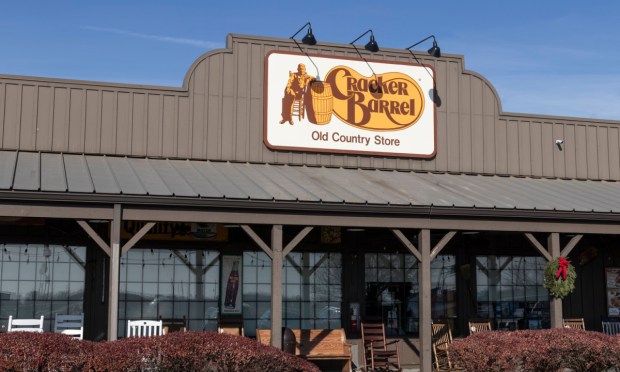
As restaurants turn to technology to weather the economic storm, Cracker Barrel has finally gotten into rewards and is now counting on its new loyalty program to drive traffic down the line.
In its first quarter fiscal 2024 financial results, released Thursday (Nov. 30), Cracker Barrel Old Country Store, which operates more than 660 name-brand locations as well as 60 fast-casual Maple Street Biscuit Company stores, noted a 2% year-over-year revenue decline. Yet the brand expects its new loyalty program to boost traffic going forward.
“During the quarter we launched our Cracker Barrel Rewards loyalty program. Guests have embraced the program, and we are pleased with the levels of enrollment to date, which have exceeded expectations,” Cracker Barrel President and CEO Julie Masino said in a statement. “We remain excited about this program and are confident it will be a meaningful differentiator and traffic driver over the long term.”
Specifically, in September, the restaurant launched Cracker Barrel Rewards, providing points (dubbed “Pegs”) for each dollar spent, which they can in turn redeem for menu items — a fairly standard model.
Masino noted on a call with analysts that the restaurant is “thrilled at the exposure we’ve received” through its partnership with Dolly Parton to drive early adoption of the program, announced late last month, offering a giveaway sweepstakes, themed merchandise, and members-only previews of the country star’s new music.
The initiative comes as financial challenges prompt consumers to reevaluate their restaurant spending, often cutting back where possible. For instance, the PYMNTS Intelligence study “The Credit Economy: How Consumers Are Approaching Holiday Spending and Travel,” created in collaboration with i2c, which drew from a survey of more than 3,300 U.S. consumers, found that 79% of consumers plan to cut back on buying food from restaurants this holiday season.
Amid these budgetary pressures, loyalty programs can go a long way towards keeping customers coming back, offering deals and discounts. In fact, most consumers now use restaurant loyalty programs, though these remain a larger part of the quick-service restaurant (QSR) industry than the casual dining segment, according to the PYMNTS Intelligence study, “Connected Dining: Consumers Like the Taste of Discount Meals.”
The study, which drew from a survey of more than 1,800 U.S. consumers, found that 51% reported using a restaurant loyalty program, with 49% participating in these programs at QSRs and 34% at full-service restaurants (FSRs).
“The team continues to do a great job to … bring benefits of the program forward, given the fact that we are ahead of our plan,” Masino said on Thursday’s call. “So, we continue to be excited about it. It’s the early days of it, but we know it’s going to be a differentiator for us going forward and an exciting part of the brand as we move forward.”
Overall, many consumers engage with restaurants digitally. The PYMNTS Intelligence report “Consumer Interest in an Everyday App,” created in collaboration with PayPal, which draws on insights from a survey of more than 3,300 consumers in the United States and Australia, reveals that one in four restaurant customers each month exclusively orders food via connected devices, and another 36% does so both via connected devices and traditional channels.